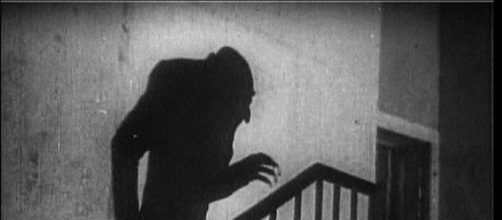With bigger and more expensive televisions comes increasingly better picture quality and sound. But have the Movies we watch improved, too? If recent stories about Hollywood's lack of paying customers are anything to go by, then it seems that current blockbusters are lacking. So what did filmmakers nearly a hundred years ago do to draw audiences? They had no digital effects and not much post-production editing equipment to speak of. Could it be that they had to focus on inventing new story techniques and work within their means to create atmosphere and emotion?
Let's take a look at three silent movies that did just that.
'The Cabinet of Dr. Caligari' (1920)
Directed by Robert Wiene, this silent movie is considered the pinnacle of German expressionism. With its Gothic sets, twisted shadows, and creepy atmosphere, this movie puts expensive Hollywood blockbusters to shame. The story is based around the creepy traveling showman known as Dr. Caligari. When there are several murders in a small village, the infamous Dr. Caligari and his cabinet-bound assistant fall under suspicion.
Even though it's nearly a hundred years old, this film is very hypnotizing with its curious distorted doorways and an amazing plot twist. Incredible in its day, the plot twist was so unique that it is still copied today by countless movies and books.
Other than the onscreen title cards, the menace of Dr. Caligari is made all too real by the actor's expressive performance.
'Nosferatu' (1922)
Once seen, you will never forget Max Schrek's terrifying performance as the dreaded Count Orlock. This unauthorized translation of "Dracula" makes some changes to Bram Stoker's classic novel but is still the most faithful movie version of the "Dracula" story to date.
With its dark, shadowy sets and sinister atmosphere, Dracula is depicted as more of a psychological terror than a bloodthirsty monster. We see his power manifesting itself in a local real estate agent who seems brainwashed by Count Orlock's psychosis.
The use of mostly real locations is also well utilized by director F.W. Murnau's chiller.
Old castles and abandoned houses are the real star of the show as Count Orlock appears from the dark corners of rooms, and his ghostly rising in a passenger ship is blood-curdling.
'Metropolis' (1927)
Widely acknowledged as the influence behind countless science fiction movies, particularly "Blade Runner," Fritz Lang's "Metropolis" has lost none of its power. Always popular, this movie has been re-scored several times on platforms such as YouTube. The story of the working class living below the rich seems even more relevant today. There's a scene in which a worker complains about ten-hour shifts and another where the boss wants to know what his workers are doing even in their own free time. Even though it is ninety years old, there are still a lot of special effects in the movie that leave you wondering "How did they do that?"
The film also has something many Hollywood movies are lacking: empathy.
When a character is fired and it seems he may have to join the workers underground, Fritz Lang generates heartfelt sympathy for the character's plight. Maybe it's time Hollywood sat down and watched these movies again.


